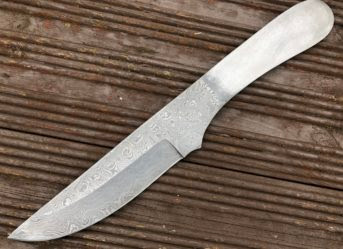How Do Chefs Care & Maintain Their Damascus Steel Knives?
If you own a knife with a Damascus steel blade, you possess a blade with exceptional beauty. Damascus steel is stunning due to its long history of use as the material for the best swords and its recognisable wavy pattern.
Therefore, great attention must be taken while using a quality blade, especially one with delicate etchings.
Here are our recommendations for maintaining the appearance and functionality of your Damascus knives.
1. Lubricate
Blades made of carbon steel called Damascus can rust if improperly maintained. The blade must be kept dry and clean to avoid rust or discolouration.
After each usage, be careful to clean and dry the knife properly.
To stop moisture from harming the blade, lube the knife with wax or mineral oil after cleaning and drying the Damascus steel chef knife. That will prevent rust from forming on your knife and preserve your engraving.
2. Avoid Abrasives.
Even though Damascus blades are built to survive, it is still necessary to use caution when utilising them. To preserve the appearance and quality of the blade, avoid using abrasives like steel wool, rough cloths, and metal polishes.
If you do use an abrasive or metal cleaner, it will erase the etched oxidation that you want on a Damascus knife to display the pattern. It is advised to send your blade back to the maker for re-etching if the etch has been drastically changed.
3. Store Properly
Store your steel knife properly and fully dry to protect it. When not in use, it's crucial to store the Damascus steel knife in a dry inside space where sudden changes in humidity or temperature won't harm it. After cleaning and lubricating, your knife will last longer if you store it in a box or protected zipper case.
Chef knives made of Damascus should always be fully cleaned and dried before being stored in a block or magnetic rack.
4. Consistent Sharpening
Even though Damascus steel knives are known for keeping their edge for a long time, occasionally, sharpening may be necessary to maintain functionality.
Sharpening handcrafted Damascus blades does not require any specific methods. A whetstone is the greatest tool for honing a Damascus blade, as it is with all high-quality knives.
5. Be Mindful of Acids
By being careful where you use your knives, you can take good care of your Damascus steel. A carbon steel Damascus blade is prone to damage when used on acidic foods (such as fruits), in moist, humid surroundings, or for field dressing games. Because of the various amounts of oxidation, these applications and conditions can erase the blade's etching.
Remember to wash and dry your knife immediately after using it, being careful not to rub the blade too harshly. The softer material won't wear out the blade when you dry it with a microfiber or cotton cloth.
Conclusion
Moisture is the enemy when caring for a Damascus steel blade, much like it is with a carbon steel blade. With the proper maintenance, Damascus steel is a stunning and sturdy metal that can survive many generations.


.png)

Comments
Post a Comment